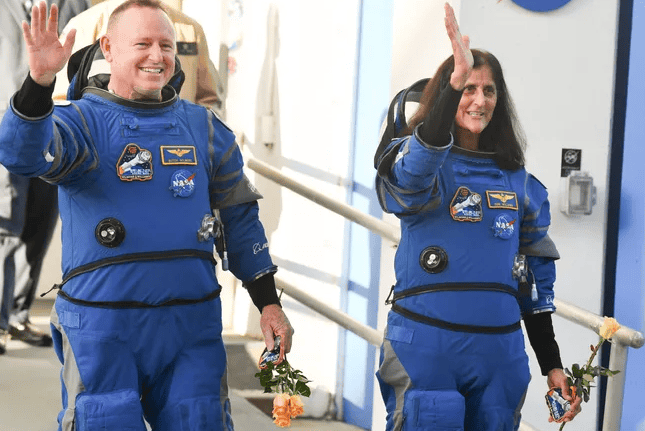Your fellow humans have made amazing advancements in the race for space. Get in nerds we’re going to the moon, or Mars, and beyond! Hopefully not in a Boeing, which is unfortunate for fans of the formerly Pacific Northwest based company. I suppose quality control isn’t something they took with them when they moved from Washington to the Pentagon.
First let’s talk Starship. If you’ve been following our series or watching the progressively improved launches on X, you’ll be excited to hear that the next launch is likely some time in July. Over the years we’ve seen the rocket ranch grow from a small tent site to a fully fledged facility stamping out rockets at an incredible rate. The first test launches earlier this year informed improvements to the design, including updated merlin engines, heat shield tiles, and even a starlink live feed that stayed active through the entire landing in the Indian ocean, despite the plasma build up cracking the actual lens of the camera.
Speaking of plasma build up, the heat from reentry is enough to melt steel, even the fancy new steel that is stronger at higher and lower temperatures. The heat shield tiles are a consistent issue that SpaceX is iterating on, with the gap between the tiles one of the main issues. If the gap is too small (potentially to keep them tight on the ship), the expansion of the material underneath from the heat differential can cause them to disassemble. If the gap is too wide the material underneath will be exposed to plasma. In a recent interview Elon Musk, lead engineer or the Starship, mentioned that they will likely have a solution for the upcoming launch. Find the full interview below.
Part 1)
Join @elonmusk for a tour inside @SpaceX‘s Starbase and the brand new Starfactory. This video was shot the day before Flight 4, on June 5th, 2024. Part 2 comes out next week! pic.twitter.com/0YsIYelGq5
— Everyday Astronaut (@Erdayastronaut) June 22, 2024
Part 2)
PART 2 interview and tour with @elonmusk is HERE! Get up close and personal to a full stack of Starship / SuperHeavy on the Orbital Launch Mount at @SpaceX‘s Starbase launch site. Then we hear how Starship Flight 4 went when we followed up with Elon after the launch! pic.twitter.com/Ral8ZorK9L
— Everyday Astronaut (@Erdayastronaut) June 25, 2024
Now we need to talk about the elephant in the room, or at least the elephant that would be in the room if Boeing hadn’t been in charge of its return. The Boeing Starliner was scheduled to return two NASA astronauts, Butch Wilmore and Suni Williams, to Earth on June 13th, but as of the 26th no announcement has been made about their confirmed return date. The Starliner itself launched with at least one known helium leak, and at least 5 more were detected once docked with the ISS.
The astronauts are cool under pressure (as you have to be to get the job). There is a fairly long window under which they can return and NASA has assured us that there are plenty of supplies on the International Space Station. And while the Starliner is leaking helium, it currently has more than needed (by a factor of about 10) to return the astronauts to Earth.
Mark Nappi, Boeing’s Starliner program manager, has acknowledged that the helium system is not performing as designed, and engineers are working to figure out the problem. The spacecraft has five known helium leaks in its propulsion system, and five of its reaction-control system thrusters have failed. It isn’t clear why the ship launched with known issues.
And it seems that’s not the only thing leaking in space, the spacewalk scheduled for today was canceled because of a leaky cooling hose. Just goes to show you how hard it is to not leak in zero gravity.
Today’s spacewalk has been cancelled due to a water leak in the service and cooling umbilical unit on NASA astronaut Tracy C. Dyson’s spacesuit. Stay tuned to the broadcast and follow the @Space_Station blog for mission updates: https://t.co/FRrjhINIvY pic.twitter.com/z8aNX6zBkx
— NASA (@NASA) June 24, 2024


